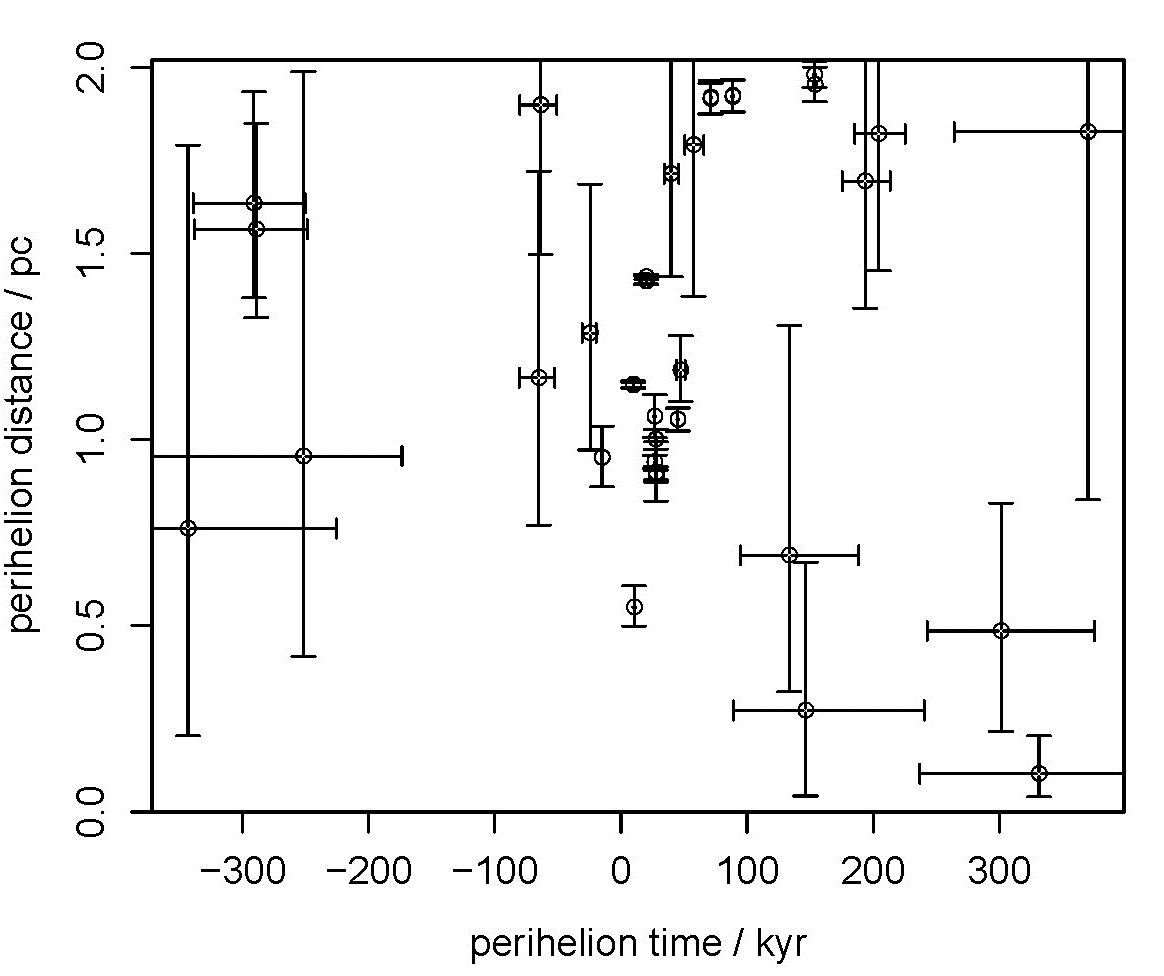IoW_20150106 - Gaia
Image of the Week |
||
Close encounters of the stellar kind |
||
|
|
 |
|
| The closest encounters with the Sun in space and time. The open circles show the expected perihelion (closest approach) distance vs. the expected perihelion time for each star. The error bars mark the 5% and 95% quantiles of the distributions for each star, which together form a 90% confidence interval on the estimate. Negative times are in the past; positive times are in the future. | ||
|
Stars are in constant relative motion, and inevitably, some will come close to the Sun. But how close? And what effect (if any) might they have? A sufficiently close encounter could perturb the orbits of comets in our Oort cloud, a primordial reservoir of billions of comets in the outer solar system extending to perhaps 0.5 pc (100 000 AU) from the Sun. Gravitational perturbations could push these comets onto orbits which send them into the inner solar system, where they could in principle collide with the Earth. Almost 200 impact craters have been identified on the Earth with ages of up to two billion years (many more craters have presumably long eroded or not yet been found). Some of these craters may be the result of impacts by such comets, and a large impact would have serious consequences for life on Earth. credits: Coryn Bailer-Jones [Published: 06/01/2015] |
||
- Removed a total of (10) style text-align:center;
- Removed a total of (2) style text-align:justify;
- Removed a total of (1) border attribute.
- Removed a total of (1) cellpadding attribute.
- Removed a total of (1) cellspacing attribute.
Image of the Week Archive
- Removed a total of (1) border attribute.
- Removed a total of (1) cellpadding attribute.
- Removed a total of (1) cellspacing attribute.








































 Sign in
Sign in
 Science & Technology
Science & Technology
